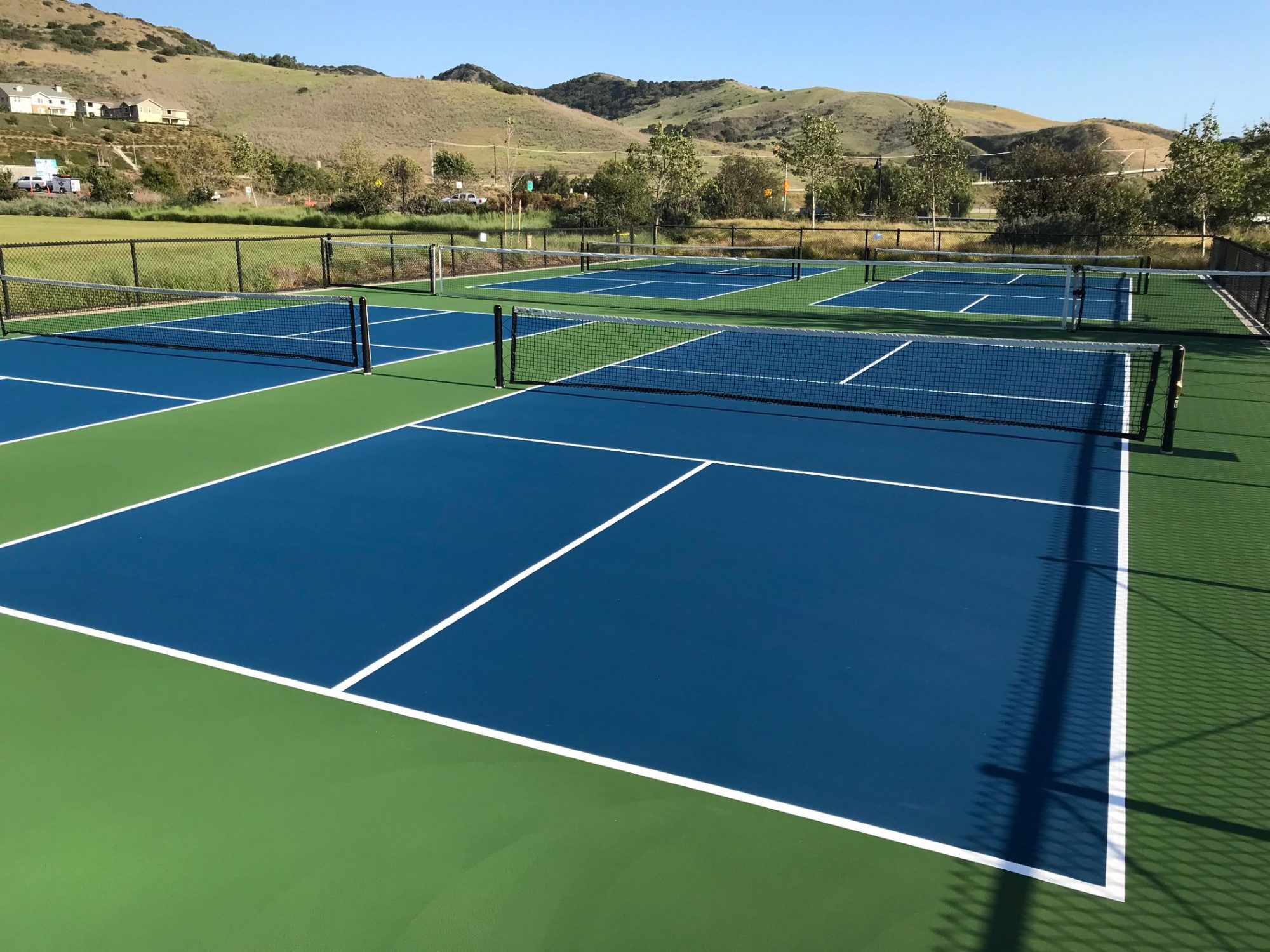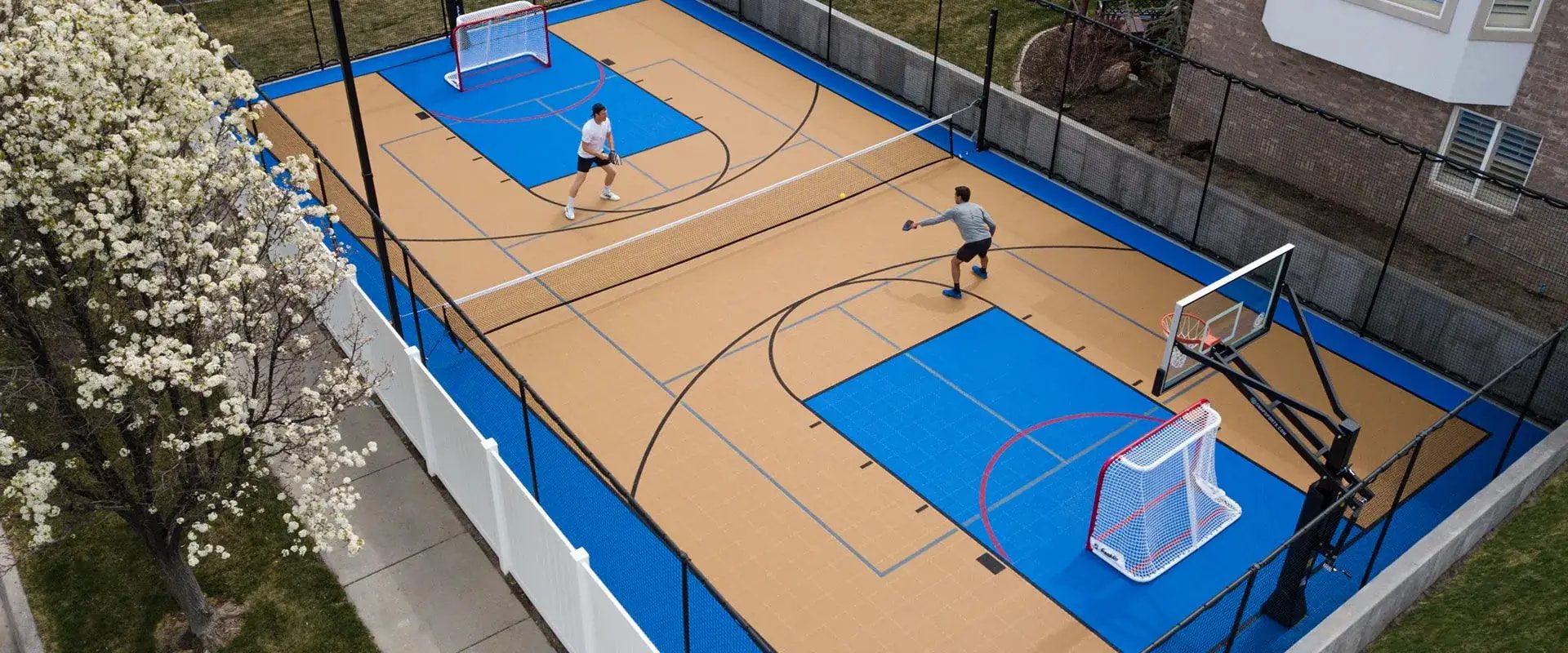Key Aspects in the Building of Pickleball Judiciaries: From Site Option to Final Coatings
The building of pickleball courts incorporates a variety of crucial variables, beginning with the option of an appropriate website that balances availability with ecological considerations. Crucial aspects such as court measurements, surface materials, and water drainage systems considerably affect not just the high quality of play yet also the durability of the center. Interest to lights and finishing touches can raise the general experience for gamers and viewers alike. Understanding exactly how each of these parts interrelates might reveal insights that are typically forgotten, prompting a closer assessment of ideal techniques in court construction.
Website Option Standards
When getting started on the building and construction of pickleball courts, it is crucial to pin down the website choice requirements that will guarantee optimal playability and accessibility. The location must be conveniently obtainable for players, ideally situated near suburbs or recreation center, to encourage participation.
In addition, the surface must be level and stable, as irregular ground can cause security hazards and influence gameplay. Appropriate drain is also critical; picking a site with good water drainage will help preserve court conditions throughout negative weather.
An additional crucial consideration is the accessibility of utilities. Accessibility to electrical energy and water is necessary for lights and maintenance objectives. Furthermore, proximity to car park facilities is essential, helping with easy gain access to for players and viewers alike.
Environmental factors can not be ignored; natural shade from trees can enhance gamer comfort, while direct exposure to prevailing winds may interfere with play. Finally, zoning regulations and neighborhood assistance ought to be taken into consideration to guarantee that the task aligns with regional standards and receives the backing it requires for successful application. By carefully assessing these standards, stakeholders can develop an inviting and functional atmosphere for pickleball fanatics.
Court Capacities and Format
To guarantee ideal gameplay and adherence to guidelines, the measurements and format of pickleball courts must be thoroughly defined. A typical pickleball court gauges 20 feet in width and 44 feet in length for both singles and doubles play. The recommended layout includes a non-volley area, typically referred to as the "kitchen area," prolonging 7 feet from the internet on either side. This area is vital, as it affects gamer positioning and shot choice - Illinois and midwest.
The net elevation is evaluated 36 inches at the sidelines and 34 inches at the facility, producing a minor dip that impacts ball trajectory. Court markings are equally important; lines should be 2 inches vast and distinctive in shade to guarantee visibility.
Additionally, a barrier area surrounding the court is recommended, generally extending 5 to 10 feet past the sidelines and standards to accommodate gamers' activities and improve safety. Correct format and dimensions not only make certain conformity with official laws however likewise boost the total playing experience, suiting both entertainment and competitive play. Mindful preparation in these areas is extremely important to the successful construction of pickleball courts.
Surface Area Material Options
Picking the ideal surface product for pickleball courts is essential for making certain ideal player efficiency and safety. The option of surface can dramatically affect gameplay, consisting of ball bounce, traction, and gamer comfort.
There are a number of choices offered, each with its distinctive attributes. Asphalt is a popular option as a result of its toughness and low maintenance needs. It offers a strong playing surface that can hold up against various climate condition however might require regular resurfacing.
Concrete is an additional widely utilized product, offering exceptional longevity and a smooth surface. It enables regular ball bounce however can be tough on players' joints, making it less desirable for long-lasting play without correct cushioning.
For those seeking improved convenience and shock absorption, supported acrylic article source surfaces present a practical option. These surface areas incorporate a base layer with an acrylic topcoat, offering enhanced grip and a softer feeling, which is beneficial for decreasing the danger of injuries.
Finally, artificial lawn is obtaining grip, particularly for multi-purpose facilities. Its flexibility and lower maintenance needs make it an appealing choice, though it might not supply the very same ball feedback as traditional hard courts. Careful consideration of these options will ensure an optimal playing environment.
Drainage and Lights Factors To Consider
Correct water drainage and reliable lights are crucial parts in the building and construction of pickleball courts, substantially affecting both playability and security. Sufficient drainage systems prevent water accumulation, which can bring about unsafe surfaces and damage to the court framework. A properly designed drain other plan incorporates sloped surface areas and proper materials to help with water flow far from the playing area - Illinois and midwest. This not only maintains the stability of the court but also decreases downtime because of poor climate condition.
Lighting is similarly essential, especially for courts meant for night use. Appropriate lighting enhances visibility, making sure that gamers can see the ball clearly and lowering the threat of accidents. The placement of lights components should be tactically prepared to remove darkness and provide even circulation of light across the court. LED lights are suggested for their power effectiveness and longevity, offering bright illumination while reducing functional prices.

Last Coatings and Maintenance
After resolving drain and illumination considerations, focus transforms to the final coatings and continuous maintenance of pickleball courts. Common alternatives include acrylic coverings and specialized sporting activities surface areas that offer optimal grip and cushioning.

Seasonal upkeep might include resurfacing every couple of years, depending on usage and ecological factors. Correctly keeping nets, court lines, and surrounding locations is just as important to offer a secure and enjoyable playing experience. By investing in top quality finishes and adhering to a structured upkeep timetable, center owners can ensure their pickleball courts stay in exceptional problem for several years to come.
Final Thought
To conclude, the effective construction of pickleball courts rests on meticulous interest to several vital elements. Site choice need to focus on accessibility and terrain stability, while court dimensions and layout should follow ideal requirements for gameplay. The option of surface area product dramatically affects gamer security and efficiency. Effective drainage and adequate lighting add to court long life and exposure. Lastly, high quality finishes and a robust upkeep routine are necessary for protecting the court's condition, enhancing the total experience for gamers and spectators alike.